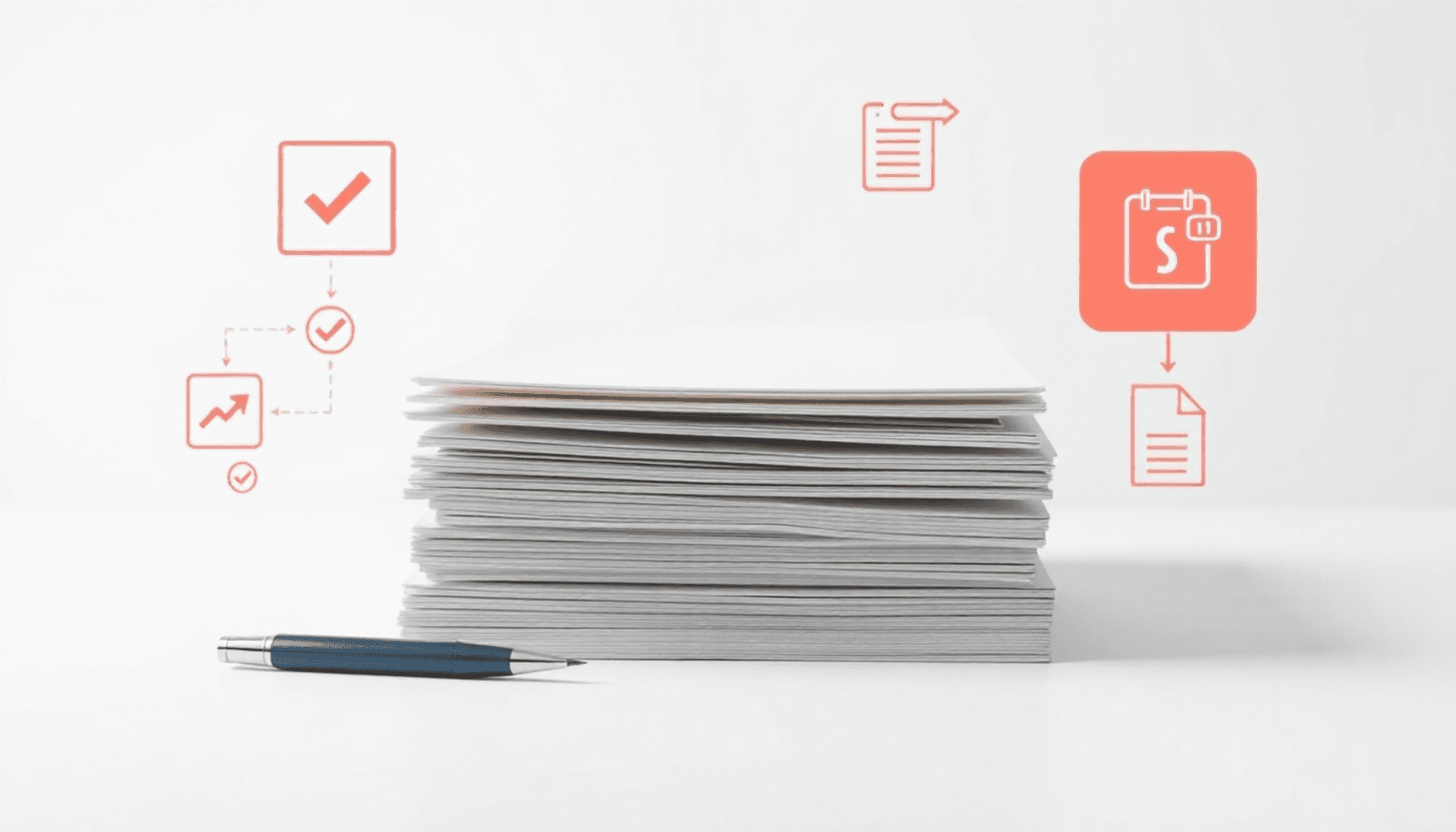Introduction
A Senior Procurement Executive plays a crucial role in the procurement system, especially in government agencies. This leadership position is responsible for overseeing purchasing strategies, ensuring compliance with regulations, and managing supplier relationships.
The importance of this role cannot be overstated:
- Strategic Leadership: Guides procurement processes to align with organizational goals.
- Cost Efficiency: Implements practices that result in significant savings for the agency, such as leveraging drastic cost reduction through collective spend.
- Risk Management: Ensures regulatory compliance to mitigate risks associated with procurement.
In this article, you will learn about:
- The specific responsibilities of a Senior Procurement Executive
- How they contribute to effective procurement management
- Insights into career growth and strategic planning in procurement
Understanding the Role of a Senior Procurement Executive
The Senior Procurement Executive is not just a title—it’s a pivotal leadership role that shapes the direction of procurement activities within an organization. This executive balances strategic insight with operational management, ensuring that all procurement policies align with organizational goals.
Key Aspects of Leadership
- Visionary Leadership: A Senior Procurement Executive must inspire and guide their team through complex procurement landscapes. This involves setting clear objectives and fostering a culture of accountability.
- Management Direction: It’s crucial to provide unwavering management direction to procurement teams, enhancing efficiency and effectiveness in sourcing strategies. This is particularly important when succeeding with limited resources, as it allows for optimization of processes and leveraging networks for business success.
Strategic Importance
The role carries significant weight in the realm of procurement management:
- Policy Development: Crafting robust procurement policies that are not only compliant with regulations but also reflective of the organization’s mission is essential. These policies serve as the backbone for decision-making processes.
- Risk Mitigation: Identifying potential risks in procurement practices helps safeguard the organization’s interests. A seasoned Senior Procurement Executive anticipates challenges and implements proactive measures to mitigate them. This might include maximizing cost savings or exploring innovative supplier trends by breaking boundaries.
This blend of leadership and strategic foresight positions the Senior Procurement Executive as a key player in driving organizational success through effective procurement management, which may also involve navigating the complexities between purchasing groups versus group purchasing organizations. Furthermore, unlocking exclusive membership benefits can provide additional leverage in negotiations and sourcing strategies, ultimately contributing to the overall success of the organization.
Key Responsibilities of a Senior Procurement Executive
A Senior Procurement Executive has a wide range of responsibilities that are essential for the smooth functioning of an organization. These tasks go beyond being just duties; they are the foundation of an efficient procurement department.
Managing Day-to-Day Procurement Functions
- Operational Oversight: This role involves overseeing daily procurement activities, ensuring that everything from supplier selection to contract negotiations is running smoothly. Leveraging procurement software solutions can optimize these processes significantly.
- Team Leadership: Leading a team of procurement professionals means guiding them through the procurement process, offering mentorship, and fostering a collaborative environment.
Ensuring Regulatory Compliance Across All Operations
- Compliance Monitoring: It’s vital to ensure that all procurement activities adhere to federal, state, and local regulations. This includes understanding the legal landscape surrounding procurement processes and ensuring that policies are in place. Implementing best practices for ensuring contract compliance can be beneficial in this aspect.
- Risk Management: Identifying potential risks associated with suppliers and contracts is key. The Senior Procurement Executive must develop strategies to mitigate these risks while maintaining compliance with procurement laws and ethical standards.
By effectively managing these responsibilities, Senior Procurement Executives contribute to an organization’s success. Their work ensures not only smooth day-to-day operations but also safeguards the organization against legal issues and fosters trust with stakeholders. Additionally, understanding indirect spend can further enhance their strategic decision-making capabilities. For any queries or further assistance, feel free to contact us.
Policy Development and Implementation in Procurement Management
A Senior Procurement Executive plays a crucial role in shaping and implementing policies that govern procurement activities. This involves the careful crafting of departmental procedures that ensure efficiency, compliance, and alignment with the organization’s goals. Key aspects include:
1. Crafting Departmental Policies
- Policies should reflect the organization’s mission and objectives.
- Procedures should address key operational areas such as vendor selection, contract management, and risk assessment.
- Creating a clear framework provides guidance for procurement staff and helps maintain consistency across operations.
2. Evaluation Criteria for Policy Effectiveness
- Assessing how well policies achieve intended outcomes is essential.
- Establish measurable metrics such as cost savings, vendor performance, and compliance rates.
- Regular reviews of policies ensure they remain relevant and effective in a changing procurement landscape.
Incorporating feedback from stakeholders can enhance the development process. Engaging team members fosters ownership of policies while encouraging innovation in procurement strategies. Additionally, utilizing technology to streamline policy implementation can lead to increased efficiency.
A well-defined policy framework not only supports day-to-day functions but also aligns procurement efforts with broader organizational objectives. This alignment strengthens accountability and transparency, reinforcing the importance of strategic planning in effective procurement management.
Career Management Strategies for Procurement Professionals
Career management in procurement is crucial for fostering a skilled workforce. Implementing robust programs can significantly enhance the capabilities of procurement staff. Key strategies include:
- Tailored Training Programs: Focus on specific skills necessary for procurement roles.
- Mentorship Opportunities: Pairing less experienced professionals with seasoned experts fosters knowledge transfer and professional growth.
- Performance Feedback: Regular evaluations help identify strengths and areas for development, guiding future training efforts.
Continuous professional development keeps procurement professionals ahead of industry trends and evolving practices. Engaging in ongoing education benefits not only individuals but also the organizations they serve. Essential components of continuous professional development are:
- Workforce Development Initiatives: Encourage participation in workshops, webinars, and certifications that enhance skills, such as those related to mastering procurement through learning & adaptation.
- Networking Opportunities: Facilitating connections through industry events allows professionals to share insights and best practices.
- Access to Resources: Providing access to the latest tools, technologies, and literature helps staff stay informed.
Moreover, transparent supplier communication plays a vital role in building trust and driving business growth in the procurement sector. It’s also essential to focus on optimizing supplier management for overall business success.
Investing in these strategies leads to a more competent workforce ready to tackle the challenges of modern procurement management. The emphasis on training and development strengthens the entire procurement function, ultimately benefiting organizational success.
Reporting and Performance Evaluation in Acquisition Activities
Effective reporting on acquisition activities is crucial for any Senior Procurement Executive. It serves as the backbone for evaluating procurement performance and aligning with broader organizational objectives. Key points to consider include:
1. Importance of Performance Metrics
- Establishing clear performance metrics is essential. These metrics help assess efficiency, cost-effectiveness, and compliance with regulations.
- Regularly tracking these metrics enables procurement teams to identify areas for improvement and optimize processes. For instance, maximizing supplier performance through effective reporting can significantly enhance overall procurement efficiency.
2. Aligning Reports with Agency Mission and Objectives
- Reports should reflect the agency’s mission and strategic goals. This alignment ensures that procurement activities support overall organizational success.
- By presenting data that connects to agency objectives, procurement executives can demonstrate their value to stakeholders.
3. Types of Reports
- Dashboards: Visual representations of key performance indicators (KPIs) allow for quick assessments.
- Detailed Reports: In-depth analyses provide context and insights into procurement operations, highlighting successes and challenges.
Consistent reporting not only enhances transparency but also fosters accountability within procurement functions. This practice ultimately leads to better decision-making and a more efficient acquisition process.
Collaboration with Chief Acquisition Officer (CAO) in Procurement Management
Collaboration between the Senior Procurement Executive and the Chief Acquisition Officer (CAO) is essential for effective procurement management. The synergy between these roles enhances organizational efficiency and ensures that procurement strategies align with broader agency goals.
Key Aspects of Their Relationship
Shared Objectives
Both roles focus on maximizing value while minimizing costs. A strong partnership fosters a unified approach to procurement, ensuring that resources are allocated effectively.
Strategic Alignment
Regular communication helps align procurement strategies with the agency’s mission. This alignment allows for cohesive decision-making and prioritization of key initiatives.
Collaboration Strategies
- Joint planning sessions to discuss upcoming projects
- Sharing insights on market trends and vendor performance
- Establishing accountability frameworks to track progress
- Implementing effective [supplier relationship management](https://hubzonedepot.com/tag/supplier-relationship-management) practices to enhance vendor partnerships
Importance of Alignment in Procurement Strategies
Alignment between the Senior Procurement Executive and CAO ensures that:
- Procurement practices reflect the agency’s strategic vision
- Resources support critical initiatives effectively
- Compliance with regulations is maintained consistently
Effective collaboration leads to streamlined processes, enhanced innovation, and a more responsive procurement function. As organizations navigate complex procurement landscapes, these collaborative efforts become increasingly vital.
To support this collaboration, leveraging advanced procurement software can significantly improve efficiency. Furthermore, understanding procurement terms is crucial for better communication regarding the value of procurement.
In times of crisis, such as those described in our guide on building resilience in procurement, this collaboration becomes even more critical.
Strategic Planning for Future Needs in Acquisition Management
The Senior Procurement Executive plays a crucial role in shaping the future of acquisition management through effective strategic planning. This involves:
1. Developing strategic plans
Crafting comprehensive plans that align procurement strategies with organizational goals is essential. These plans should focus on:
- Identifying key procurement objectives
- Setting clear timelines and milestones
- Allocating resources efficiently
2. Assessing workforce requirements
Understanding future needs includes evaluating current staff capabilities and anticipating gaps. This assessment covers:
- Skills necessary for upcoming projects
- Potential roles needed to support growth
- Training programs to upskill existing employees
A well-thought-out approach ensures that the procurement team is not only prepared for immediate demands but also equipped to handle future challenges. By integrating these elements into acquisition strategies, the Senior Procurement Executive can drive continuous improvement and foster adaptability within the organization. This proactive stance not only enhances operational efficiency but also positions the organization as a leader in procurement innovation.
To further enhance these strategies, understanding the difference between strategic sourcing and category management can provide valuable insights into optimizing procurement processes.
Case Study: HubZone Depot’s Impactful Procurement Practices
HubZone Depot stands as a prime example of how effective procurement practices can drive success in both the public and private sectors. As a certified HUBZone business model and a women-owned enterprise, HubZone Depot is committed to delivering quality products while enhancing community welfare.
Mission and Vision
- Mission: To provide a diverse range of products, including office supplies, industrial tools, and more, tailored specifically for government entities and private sector clients.
- Vision: To strengthen local economies by actively hiring from HUBZone areas and ensuring that community growth aligns with their procurement operations.
Exemplifying Procurement Excellence
HubZone Depot showcases effective procurement through strategic partnerships:
- Office Depot: Delivering significant cost savings while meeting client needs efficiently.
- MSC Industrial: Supporting clients with specialized inventory solutions that enhance operational effectiveness.
By implementing group purchasing initiatives, HubZone Depot maximizes value for its clients while maintaining a focus on customer satisfaction. Their approach not only fosters deep discounts but also aligns with their mission to support Tier 1 spending goals. This is evident in their tail spend management strategies, which help streamline costs while optimizing procurement processes.
Furthermore, HubZone Depot understands the importance of effective sourcing strategies for hiring top talent, ensuring that they attract the right individuals to drive their mission forward. They also provide valuable insights into managing a one-person procurement function, offering strategic solutions for cost efficiency and supplier management.
In addition to these efforts, HubZone Depot continuously seeks to optimize their procurement processes, proving that impactful procurement practices can benefit both businesses and communities alike.
Conclusion: The Evolving Landscape of Procurement Management
The Senior Procurement Executive role is vital in aligning procurement strategies with agency goals. This position not only drives efficiency but also fosters innovation and community engagement.
- Critical Nature: Supporting agencies through effective procurement practices is essential for operational success.
- Call to Action: Aspiring professionals should consider a career in procurement management. The field offers dynamic opportunities for growth, impact, and collaboration.
The journey towards becoming a Senior Procurement Executive is rewarding. Dive into this exciting realm and contribute to shaping the future of procurement!






